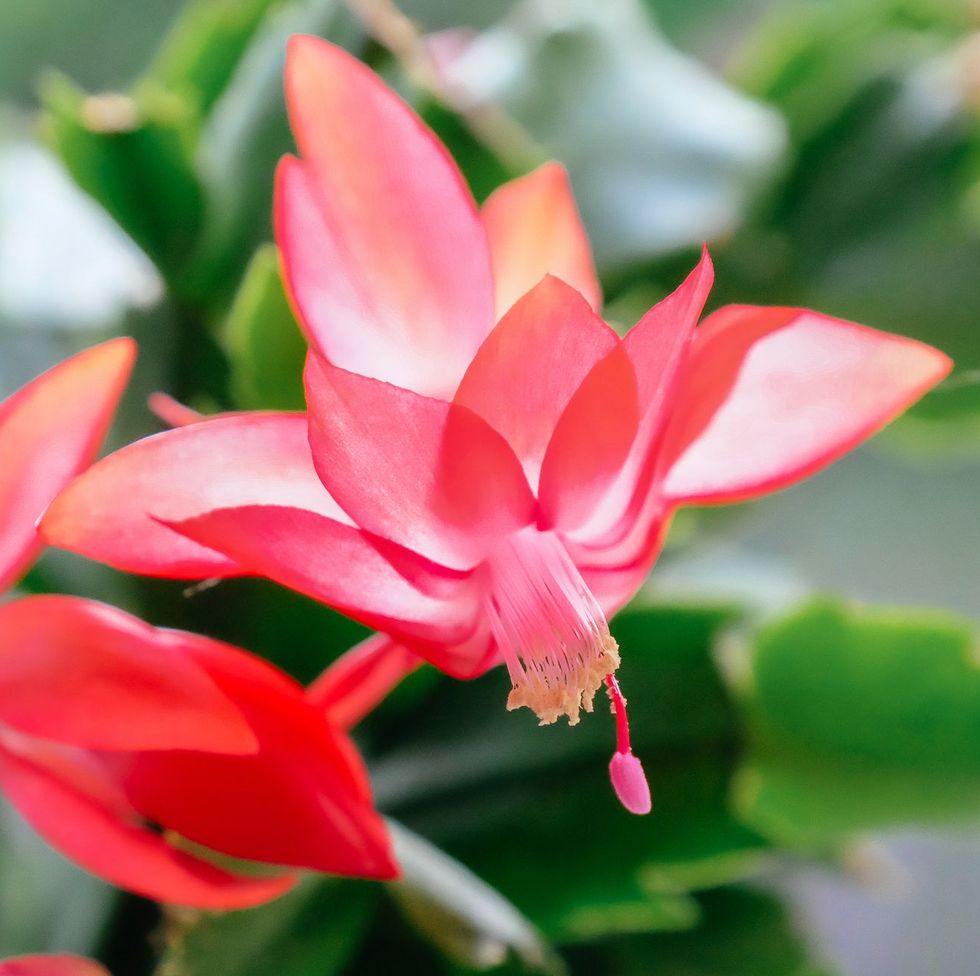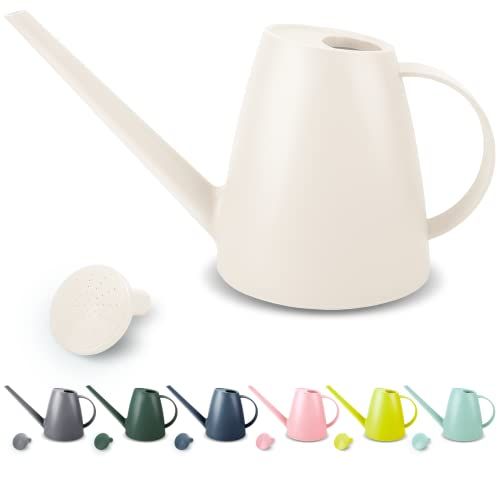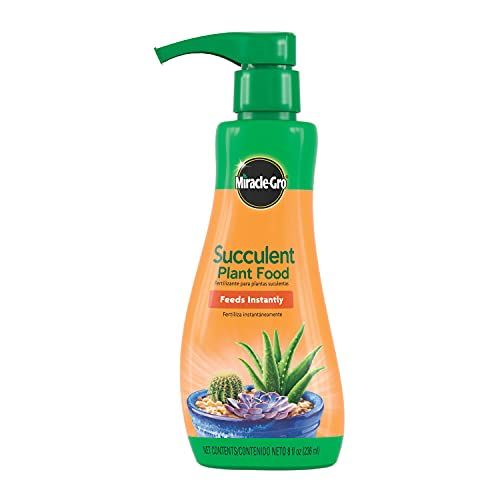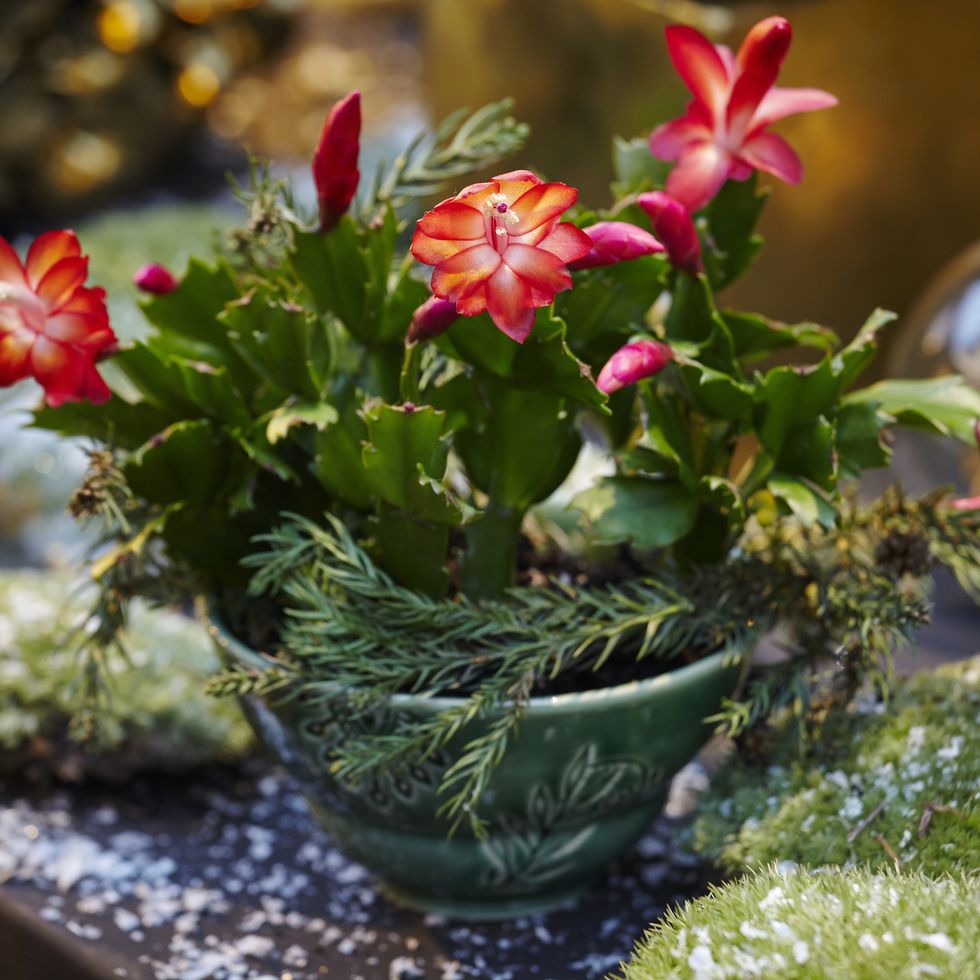If you’re looking to deck out your home with festive greenery for the holidays, you can never go wrong with Christmas plants. Along with poinsettia, rosemary and amaryllis, there’s one merry green you have to include as one of your indoor picks: the Christmas cactus. The winter-flowering plant is easy to care for and propagates easily. Its blooms are a vibrant shade of red, pink or purple, making it a gorgeous houseplant and a thoughtful holiday gift. To keep these plants thriving throughout the snowy season, we’re sharing how to care for your Christmas cactus, from tips on blooming and growth to advice on repotting and avoiding plant-eating pests.
With that said, read on for our Christmas cactus indoor care tips to find out all the ways that you can keep your plant healthy and full of lively flowers. And whether you’re a novice gardener or green thumb enthusiast, check out our ultimate plant guide for tips and tools to keep your indoor plants looking their best.
What You’ll Need
Before you get started, stock up on these Christmas cactus care essentials.
How to Care for a Christmas Cactus
A lack of water and dramatic temperature swings can cause flower buds to drop more rapidly. Maximize your specimen’s blooming period by paying attention to these six key factors:
- Soil: Use a quality soil rich in humus and other nutrients.
- Temperature: Maintain an optimal climate of 65 degrees.
- Watering: Keep the soil evenly moist while your plant is blooming, misting it frequently.
- Light: Place the cactus in an east-facing window for moderate light and some direct sun.
- Fertilization: Apply a high-potassium fertilizer every two weeks once buds form.
- Transplantation: Repot your cactus each year after flowering.
Common Christmas Cactus Pests
While Christmas cacti are typically low-maintenance plants, they aren’t immune to pests and diseases. If you find your plant has been invaded by pests, Gardening Know How shares ways to avoid some of the most common types.
- Mealybugs: These insects typically infect indoor plants. They have cottony masses that make them easy to detect and can attract mold if left alone over time. Pick them off with a toothpick or use a systemic insecticide formula to get rid of them.
- Spider mites: While you may be unable to detect these tiny insects on your cactus, their webbing on the leaves makes their presence known. These dust-liking creatures can be removed using insecticidal soap spray.
- Fungus gnats: Not only are these insects tiny, but they also fly and love soggy soil. You may notice a loss of leaves if the infestation is large. If insecticidal soap spray doesn’t work, fill a clean pot with fresh and well-drained potting mix before repotting.
How to Encourage More Blooming
Keep plants cool (around 50 degrees) following their blooming period. Water them to keep the soil just barely moist, and be sure to withhold fertilizer. When new growth begins, use the following strategy to encourage blooming: House the plants in an environment with a temperature between 55 and 65 degrees, and alternate between giving them 10 hours of light and 14 hours of total darkness for four to six weeks after the growth appears. When buds appear, introduce the plant to warmer temperatures and begin regular culture, as described above. Plants should bloom in about six weeks.
How to Repot a Christmas Cactus
Your festive greens only need to be repotted every three to four years. Take notice if the roots start to grow out of the container’s bottom or if its overall appearance looks weary.
Tip 💡: Never repot your Christmas cactus while it’s blooming.
- Choose the right container. Pick a pot that’s slightly larger than your older one. Make sure it has a drainage hole at the bottom, since your Christmas cactus will rot if it lacks air.
- Make sure your potting mixture is lightweight and well-drained. Never use soil that comes directly from your garden, says Plant Care Today, since it could contain bacteria and viruses that would harm your plant.
- Repot your Christmas cactus. After the gentle removal of your plant, massage the roots to remove old soil, then place it inside the new container so the “top of the root ball is about an inch (2.5 cm.) below the rim of the pot,” according to Gardening Know How.
- Water your plant moderately and put it in a shady location for two to three days, as an excess amount of direct sunlight can damage the leaves.
Assistant Editor
Mariah Thomas (she/her) is an assistant editor for Good Housekeeping, where she covers home and lifestyle content. Mariah has more than four years of editorial experience, having written for TLC, Apartment Therapy, Women’s Health and Avocado Magazine. She received her master’s degree in journalism at the Craig Newmark Graduate School of Journalism and published her first book, Heart and Soul: Poems of Thoughts and Emotions, in 2019. She’s also the founder of RTF Community a platform for creatives of color to connect, learn and showcase their work.
Senior SEO Editor
Katarina Avendaño (she/her) is the senior SEO editor for Good Housekeeping, where she writes and edits lifestyle content and contributes to SEO strategy. Before joining GH in 2021, she was the digital editor at New York Family, where she was responsible for the website’s content and strategy. Katarina received her bachelor’s degree in communications and Spanish from the University of Washington.






